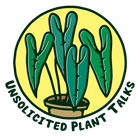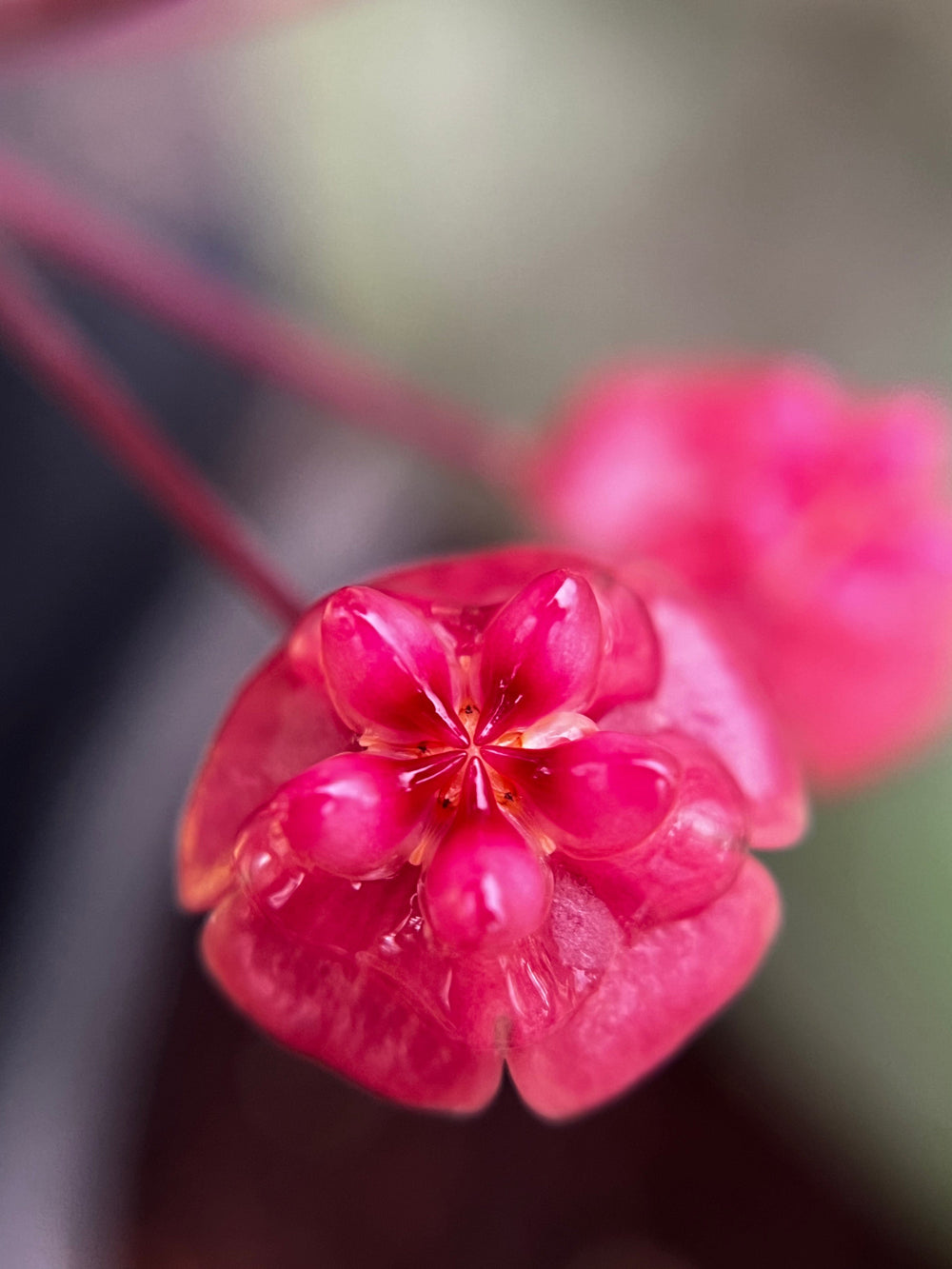Hoya latifolia Care and Cultivation: Our Expert Guide

Table of Contents
- A Bit of Hoya History: What's With All the Name Changes?
- Why I Love Hoya latifolia
- The Sooty Side of Hoya latifolia
- Caring for Hoya latifolia
- Light Requirements
- Watering
- Soil
- Temperature and Humidity
- Fertilizing
- Propagating Hoya latifolia
- Common Pests and Diseases
- Toxicity
- Wrapping Up
Hello, plant enthusiasts! It's April from Unsolicited Plant Talks, and today we're diving into the world of Hoya latifolia (formerly known as polystachya or tjadamalangensis).
This post is part of my Show and Tell series, where I'll explore different plants, their care requirements, and any interesting tidbits that might help you in your plant journey. If you want the full, unsolicited version, watch the video here:
Hoya latifolia is a plant that I've had for a while, but it recently caught my attention due to its fullness of peduncles and sheer amount of blooming. It's a beautiful example of how mature plants can look and a testament to the joy of plant growth.
A Bit of Hoya History: What's With All the Name Changes?

Since 2019, there has been a boom in the collection of Hoyas. This surge of interest has led to a deeper exploration of these plants' origins, their discoverers, and their native habitats. However, this increased scrutiny has also revealed that many Hoyas in circulation have been incorrectly identified.
For instance, some Hoyas previously known as other species are now correctly identified as Hoya latifolia. Examples include Hoya macrophylla and species "Sarawak," which are actually types of Hoya latifolia. This reclassification is not a republishing under a different name, but rather a correction of previous misidentifications.
Why I Love Hoya latifolia

This Hoya latifolia is a plant that has been thriving under my care for about three to four years. One of its most striking features is its cluster of peduncles, which bloom profusely. The flowers are a unique yellow-green color, a hue not commonly seen in other Hoyas.
The plant also has a unique characteristic of producing multiple peduncles from one node, indicating its maturity and long blooming history. This feature is shared with other latifolia varieties, such as Hoya macrophylla.
The Sooty Side of Hoya latifolia

One aspect of Hoya latifolia that might cause concern for new plant owners is the presence of a black powdery substance, known as soot, on the peduncles. However, this soot is not always a sign of pests, at is may be for other varieties. In the case of Hoya latifolia, the soot is a byproduct of the nectar itself and a specific fungus that feeds on it. While it might not be aesthetically pleasing, it doesn't hinder the plant's growth or health, and an occasional clean can't hurt either.
Caring for Hoya latifolia

Hoya latifolia is a forgiving plant, tolerating periods of drought and thriving in both bright and hot environments. In brighter conditions, the leaves tend to be smaller and thicker, a mechanism for water retention (pictured above). Additionally, bright light exposure results in a beautiful coloration on the leaves, a sign of the plant's adaptation to a brighter, warmer environment - kind of like getting a tan.
However, if you prefer larger, darker green leaves, growing the plant in a lower light environment will achieve this. The plant will produce larger leaves to capture as much light as possible for photosynthesis.
Light Requirements
Hoya latifolia (Sarawak) flower thrives in bright, indirect light. Think of it as a sun-loving plant that prefers a gentle glow rather than harsh, direct rays. An ideal location is near an east- or west-facing window, where it can receive ample light without being scorched. Avoid placing it directly in front of a south-facing window, as the intense sunlight can burn its leaves.
Watering
Similarly to all types of Hoya plants, Hoya latifolia (Sarawak) is a succulent and stores water in its leaves. This means it's more tolerant of drought than overwatering. Allow the top inch of soil to dry out completely between waterings. To check the moisture level, stick your finger into the soil. If it feels dry, you can water the plant.
However, if it feels moist, wait a few more days before watering again. Overwatering can lead to root rot, so it's important to strike a balance between keeping the soil hydrated and preventing it from becoming waterlogged.
Soil
A well-draining potting mix is essential for the health of your Hoya latifolia (Sarawak). A blend of peat moss, perlite, and orchid bark is a great option. These ingredients provide a porous medium that allows excess water to drain away, preventing root rot. Avoid using heavy soils that retain too much moisture, as they can suffocate the roots.
Temperature and Humidity
Hoya latifolia (Sarawak) prefers temperatures between 65-85°F (18-30°C). It is sensitive to cold drafts and sudden temperature changes. Avoid placing it near cold windows or doors, and try to maintain a consistent temperature in your home.
While it can tolerate average humidity levels, higher humidity promotes healthier growth and flowering. Consider misting the leaves regularly with lukewarm water, placing the plant on a pebble tray filled with water, or grouping it with other humidity-loving plants. You can also use a humidifier to increase the humidity in the room.
Fertilizing
During the growing season (spring and summer), fertilize your Hoya latifolia (Sarawak) with a balanced liquid fertilizer diluted to half strength once a month. Avoid over-fertilization, as it can lead to salt build-up in the soil and damage the plant's roots.
Propagating Hoya latifolia

When it comes to propagation, Hoya latifolia, and other cultivars with woody stems, can be a bit challenging, since roots need time to break through the tougher stem. However, with patience and the right techniques, successful propagation is achievable. Here are my tips and tricks for faster rooting:
- Create small wounds or scores on the stem before dipping it into a rooting powder. This provides more openings for roots to emerge. However, this method should be used with caution, as it increases the risk of bacterial infection and rot.
- Reduce leaves, or the leaf size, on the cutting. This allows the plant to focus more energy on root production rather than maintaining the leaves.
Common Pests and Diseases
Common varieties of pests that can infest your Hoya latifolia (Sarawak) are mealybugs and scale insects. Look for small, white, fluffy masses or hard, brown scales on the plant. If you notice an infestation, isolate the plant to prevent the pests from spreading to other plants. Remove the pests manually or use insecticidal soap.
Another common disease observed in Hoyas is root rot, which is caused by overwatering. Symptoms of root rot include yellowing leaves, wilting, and a foul odor. To prevent root rot, allow the soil to dry out completely between waterings and ensure proper drainage in your pot.
Toxicity
Hoya latifolia (Sarawak) is generally considered non-toxic to cats and dogs. However, while it's not poisonous, ingesting large quantities of any plant material can cause digestive upset in pets. Symptoms may include vomiting, diarrhea, or loss of appetite.
To err on the side of caution, it's always a good idea to keep Hoya latifolia (Sarawak) out of reach of curious animals, especially if you have pets that tend to nibble on plants. This will help prevent accidental ingestion and any potential discomfort.
Wrapping Up

Hoya latifolia, with its unique features and easy care requirements, is a great addition to any plant collection. Whether you're a seasoned plant parent or a newbie, this plant is sure to bring joy and beauty to your space.
Remember, the world of plants is vast and there's always something new to learn. So, if you have any tips or experiences to share, feel free to comment on our social media. Happy planting!











